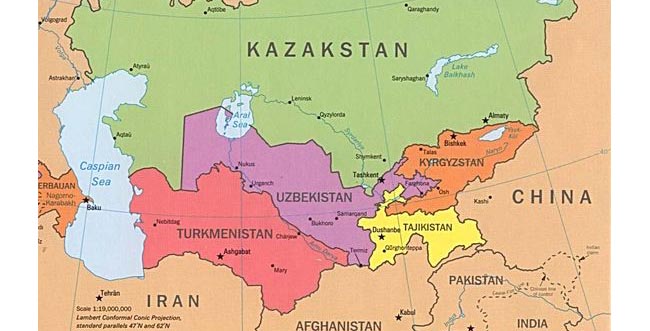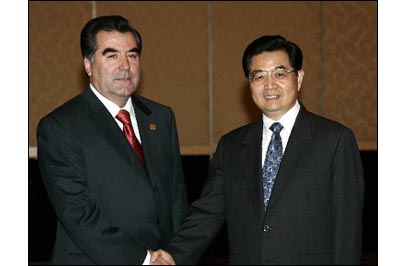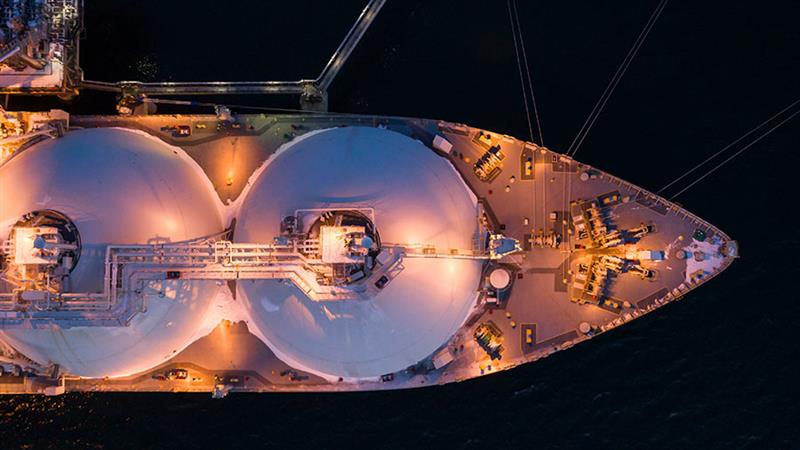China Invests in Central Asia Stability Through Tajikistan

This is the ninth in a series of articles that looks at China’s borders. As China has grown in the last 30 years, so have the often complicated relationships it has with its many varied neighbors. In this article, we take a look at Tajikistan.
By Joyce Roque
May 22 – Tajikistan belongs to the group of the Central Asian “Stans” formerly under the mantle of the Soviet Union: Kazakhstan, Kyrgyzstan, Turkmenistan and Uzbekistan. Its name means the “Land of the Tajiks” in Persian. The mountainous landlocked country is surrounded by Afghanistan to its south, Uzbekistan to the west, Kyrgyzstan to the north, and China to the east. The country’s population is made up of mostly the Tajik ethnic group, who share history and culture with the Persian people.
Much like what the Middle East was once before, Central Asia sits on the biggest untapped energy reserves in the world although it’s still plagued by poverty, corruption, despotic regimes and economic instability. This heady combination makes it a fertile breeding ground for Islamic militarism exported from neighboring Afghanistan.
Often Central Asia’s problems rarely figure in global consciousness although its geographic significance has grown to the West – it is a vital part of the Muslim world. But more than anything, the region is a site for Islamic solidarity due to ethnic affinity and geographic proximity with regional players like Iran, Afghanistan and Pakistan.
It is a volatile region that also regulates the flow of drugs, arms and Islamic militarism through its porous borders. Estimates show that almost 90 percent of heroin smuggled to the West come from Central Asia.
Geography is Destiny
Of all the Central Asian states, Tajikistan is the poorest and the most fragile. It is not rich in oil like Kazakhstan and Uzbekistan. Although independent, two-thirds of its population remains poor and its citizens long for the days when they were under the financial stability of the Soviet Union.

Tajikistan has never recovered from being a former Soviet nation. The government has been unable to escape flawed structural reforms, corruption, bad governance, unemployment, power shortages, and external debt.
The country relies on its rich resources of cotton and aluminum to bring income although these mainstays failed to rake profits for 2007 when supplies were affected by high natural gas prices, debt and electricity shortages. More so, sources point out than other than for its hydroelectric power and strategic location, Tajikistan does not offer much in terms of natural resources.
In January 2007, China agreed to loan Tajikistan US$200 million for a period of 25 years at 1 percent interest to build the Zeravshan Hydroelectric plant. Upon completion, the hydroelectric power plant is expected to have an annual output of around 600 million kwh.
There are reports of the country having large coal reserves, but its mining industry has remained undeveloped since 1991. Tajikistan has not produced any coal despite having 29 coalfields with an estimated value of more than 15.3 billion tons or roughly 41 percent of Central Asia’s reserves.
The Afghanistan Factor
The country’s ace, if you will, lies in geopolitics. Tajikistan offers a way to maneuver with or against Afghanistan. The United States knows this and in 2007 paid for a US$36 million bridge to connect the two countries.
Tajikistan’s location in Central Asia and 257 mile shared border with China can make it a faucet for chaos that if made to run freely could overflow the country with drugs, human smuggling and Islamic militarism.
During the years prior to the fall of the Soviet Union, Afghan mujahideen groups built an Islamic military in Tajikistan with the help of Pakistan’s Inter-Services Intelligence. It adds that 150 groups of Afghan groups were set-up along the Tajikistan border complete with training centers for the youth with the goal of flushing out Communist and installing Islamic governance.
By the time Tajikistan became independent in 1991, violent clashes in the country led to the Tajik Civil War. The war pitted government forces and with a coalition of Islamic militants that left almost 200,000 people dead.
Ensuring the Future
 China knows it has no choice but to guard its borders. It can be assumed that it hopes Tajikistan relations fulfill two things: a way to stabilize a mercurial Central Asia and contain any separatist movements in its Xinjiang Uygur Autonomous Region.
China knows it has no choice but to guard its borders. It can be assumed that it hopes Tajikistan relations fulfill two things: a way to stabilize a mercurial Central Asia and contain any separatist movements in its Xinjiang Uygur Autonomous Region.
“China’s policy aims for a peaceful external environment conducive to curb secessionism and extremism in Xinjiang, besides securing China’s national security and economic objectives,” says Dr. K. Warikoo, the Director of Central Asian Studies Program at Jawaharlal Nehru University.
Already, China has engaged Tajikistan through the Shanghai Organization Cooperation (SCO) where it shares membership with other former Soviet states like Kazakhstan, Kyrgyzstan, Uzbekistan, Russia and Tajikistan. Through the framework of the SCO, China and Tajikistan have promised to improve bilateral trade relations and cooperation against terrorism, separatism and extremism.
Both Tajikistan and China often hold military exercises aimed at combating terrorism and maintaining regional security. Last year, Tajikistan was the recipient of a US$172 million loan from a US$900 million preferential export credit line given by China to SCO member states.
Since the beginning of China and Tajikistan formal relations 15 years ago, both countries have signed 105 agreements and bilateral trade has risen to US$524 million in 2007.
As for Xinjiang, the call of Uyghur separatism to return to their former independent Eastern Turkistan has not been met with an equal amount of enthusiasm as the issue of Tibet. Those rallying for an independent Xinjiang complain of being treated like second-class citizens and their land being exploited by Beijing.
Xinjiang, a name meaning new territory in Mandarin, was militarily captured and annexed by China after World War II. Its 8 million residents are made up of mostly Muslim Turkic groups that include the Uyghurs, Uzbeks, Kyrgyz, Tatars, Kazakhs, and the Tajiks that profess affinity with Central Asia than with the local Han Chinese.
Dr. Warikoo: “Whereas at the official level,the Central Asian governments support China and its policies, at private and public level there is resentment over China’s policy towards Xinjiang and particularly towards Muslims.”
The region is China’s biggest oil and gas producer with 26.4 million tons of crude oil and 21.2 billion cubic meters of natural gas output for 2007. It occupies one-sixth of China’s total territory and a quarter of its boundary.
Therefore there is a fear that a resurgence in Afghan radical Islamic activity crossing from Tajikistan could embolden Uyghur separatism in Xinjiang; leading to an unstable China and affecting Asia as a whole.
This is the ninth in a continuing series that focuses on China’s borders. The complete series to date can be found here.
- Previous Article Good China Workforce Practice During The Beijing Olympics
- Next Article Report: State of Business in South China Strong



























